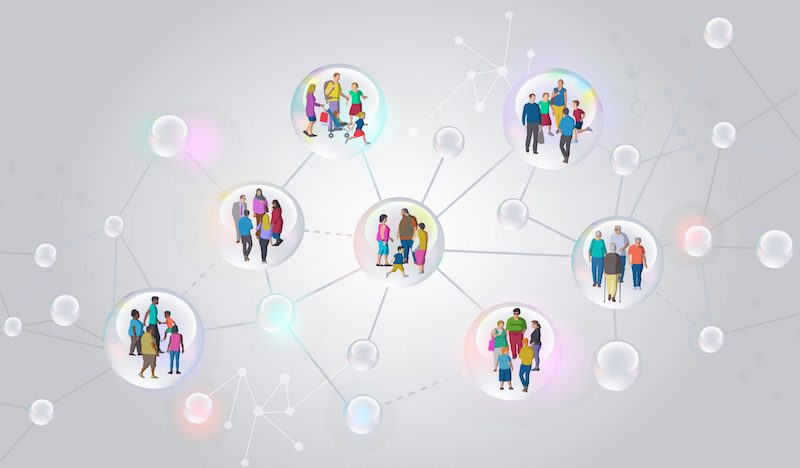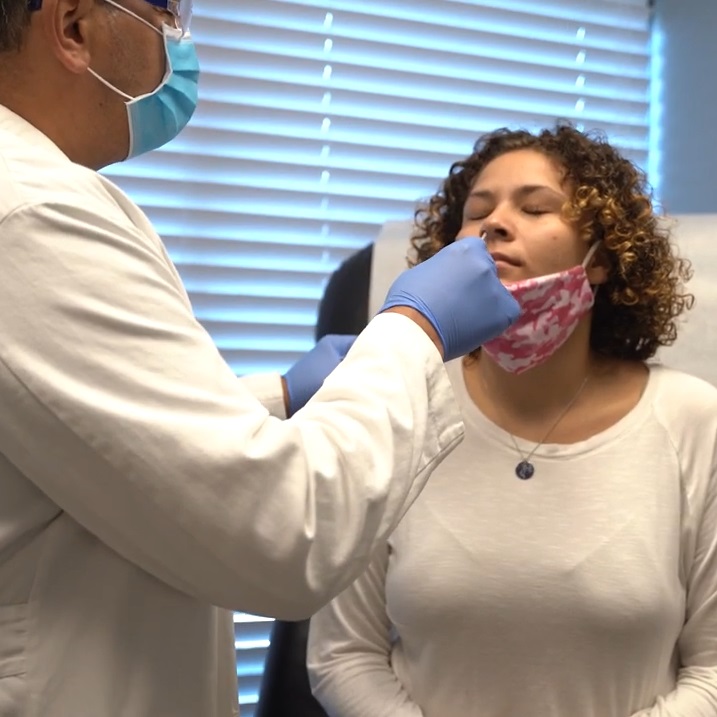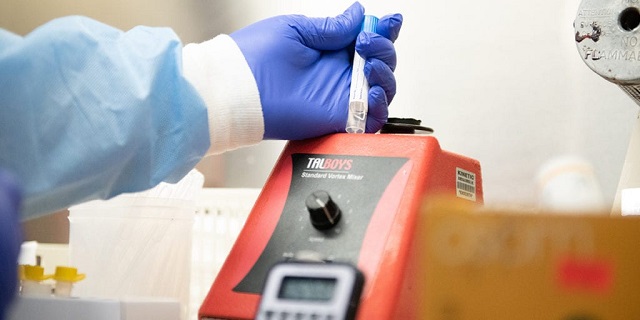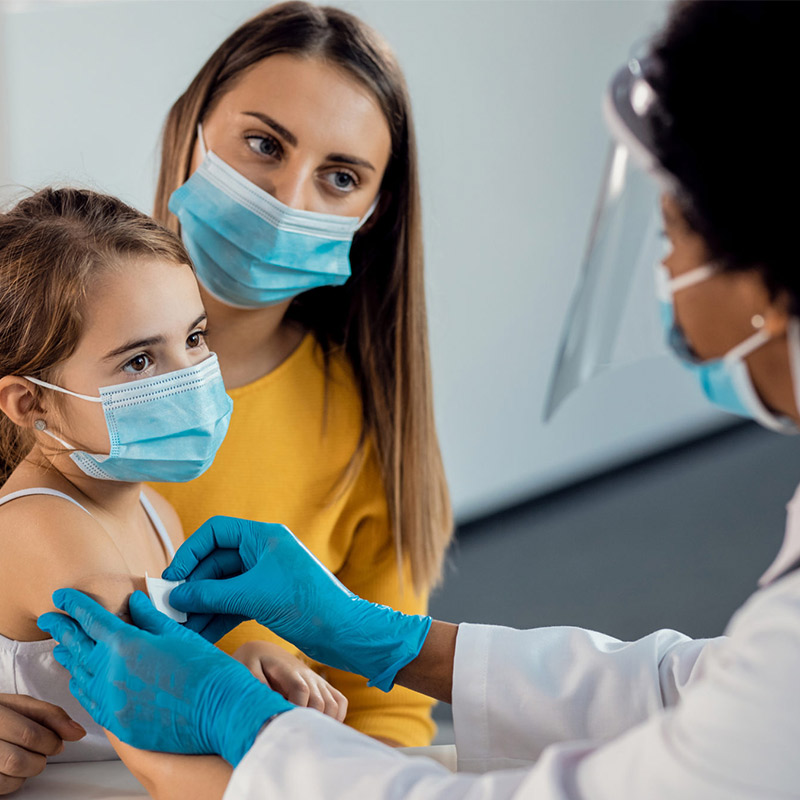How To Create a COVID Bubble and Why You Should Consider One

August 26, 2020
Updated 1/4/22
If you’ve been following social-distancing guidelines to help limit the spread of COVID-19, you and your kids may be aching to socialize with more people.
One way to expand the number of people whom you’ll interact with is creating a small network of trusted friends or relatives, known as a social bubble, who agree to abide by a shared set of rules to try to keep everyone safe from COVID-19. Some people call these COVID-inspired social bubbles “social pods” or “quaranteams.”
“Forming a social bubble helps you expand the number of people whom you feel comfortable interacting with, while keeping the total number of people you see small,” says Juan Prudente, M.D. a family medicine specialist with Hackensack Meridian Medical Group. “Being able to hug people from outside your household or have them over for dinner without stressing can add some normalcy back to your life. A bubble can also provide playmates for children while keeping their contact with others to a minimum.”
Social bubbles may help reduce the spread
Social bubbles are research-proven to help slow the spread of COVID-19, because they limit the number of people whom you meaningfully interact with. Many experts suggest capping a bubble at about 10 people, which may be two or three households.
If you’re thinking about creating a bubble with friends or family, have lengthy conversations to see if your households are well-matched. It helps if you live near each other, have similar lifestyle habits and share the same risk tolerance for COVID-19.
Some experts suggest that everyone in a bubble should be about the same age – peers, not parents. Older people (and those with underlying health conditions) may not want to expand their social circles, because they’re at higher risk of COVID-19 complications, should they get sick.
“You really need to use your judgment when deciding whom to include in a social bubble, since the ultimate goal of a bubble is to avoid getting the virus while having a larger group of people to interact with,” says Dr. Prudente.
Who’s a good fit for your bubble?
These are good questions to ask prospective bubble-mates:
- Are all eligible people in your household vaccinated and boosted for COVID-19?
- Is everyone in your household staying six feet away from others?
- Is everyone wearing masks in public?
- Will everyone limit in-person social interactions to the people within our bubble?
- Will everyone abide by whatever rules we jointly agree upon?
Next, talk about your pandemic lifestyle habits, which should help you see if everyone is compatible. For example, do you have groceries delivered or go to the supermarket? Do you change your clothes and shower after going to the store or the office? It’s also important to know which bubble members will be going to work or school, versus working or learning at home.
Finally, decide what ground rules everyone will be comfortable with. Consider ideas like:
- whether touching/hugging is okay
- whether meeting people outdoors (while six feet apart) is okay if they aren’t in the bubble
- what to do if someone takes a vacation and needs to self-quarantine upon return
- what to do if someone within the bubble gets sick
How to initiate your social bubble
Once you decide on rules, consider taking two weeks to ensure that everyone is following them before getting together. Consider doing a test run for a week or two before committing for the long term. Also, create an exit strategy in case people decide to leave the bubble.
“It can help if you agree ahead of time that nobody should get hurt or upset if someone decides to leave the bubble,” says Dr. Prudente. “However, careful planning ahead of time should make the bubble appealing for the long term.”
How to act when you’re outside your bubble
It’s important to distance yourself from others. When you go out:
- stay 6 feet away from people outside of your bubble
- wear a mask over your nose and mouth
- wash your hands frequently, or use hand sanitizer if soap and water are not available
- follow the group’s rules about shopping, seeing people you know, etc.
Next Steps & Resources:
- Meet our clinical contributor: Juan Prudente, M.D.
- To make an appointment with Dr. Prudente or a doctor near you, call 800-822-8905 or visit our website.
The material provided through HealthU is intended to be used as general information only and should not replace the advice of your physician. Always consult your physician for individual care.
Find a doctor near me
How Does Soap Work?

Learn how soap removes germs. Dr. Wolaniuk explains the science behind handwashing. Improve hygiene; call 800-822-8905 for care.
How to Prepare for a COVID Test

Prepare for your COVID-19 test. Find testing sites, learn what to bring, and avoid common mistakes. Get helpful tips for a smoother experience.
Find a doctor near me

How to Prepare for Your COVID-19 Vaccine
Prepare for your COVID-19 vaccine. Learn how to schedule your appointment, what to wear, and what to bring. Get vaccinated today.

What Can You Do After You’re Fully Vaccinated Against COVID?
There are advantages to getting fully vaccinated against COVID-19.

Can You Get COVID Twice?
Can You Get COVID Twice? Learn about COVID-19 reinfection from Drs. Nehmad and Unuigbe. Get the facts and stay safe. Call 800-822-8905.

COVID Vaccine and Children: What to Know
Here's everything parents need to know about the COVID vaccine.
